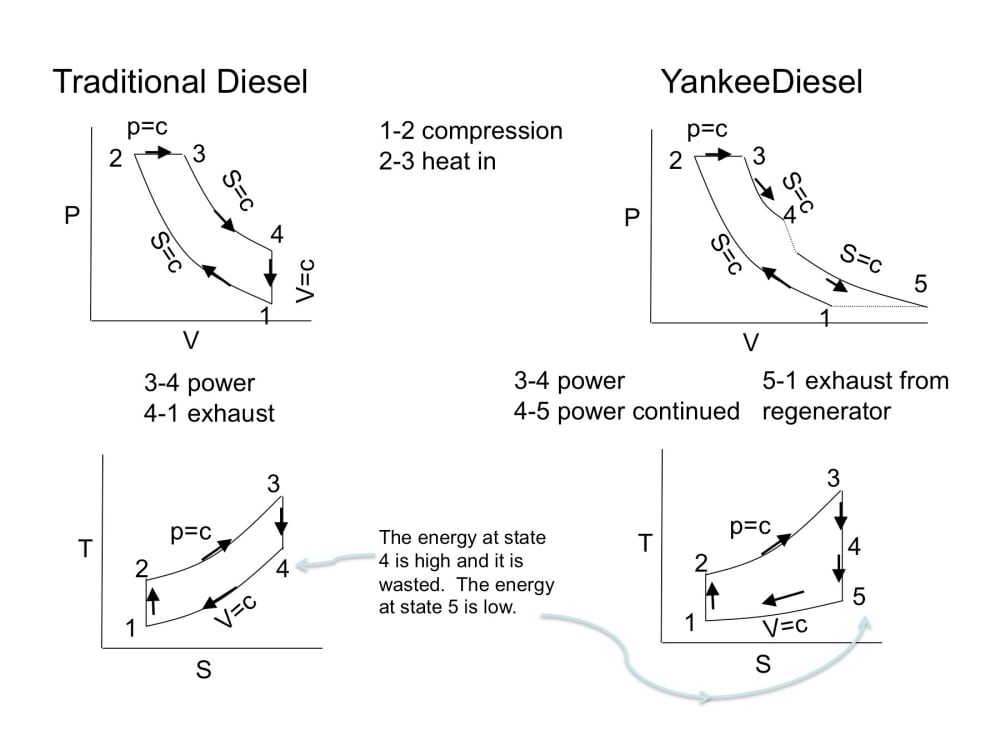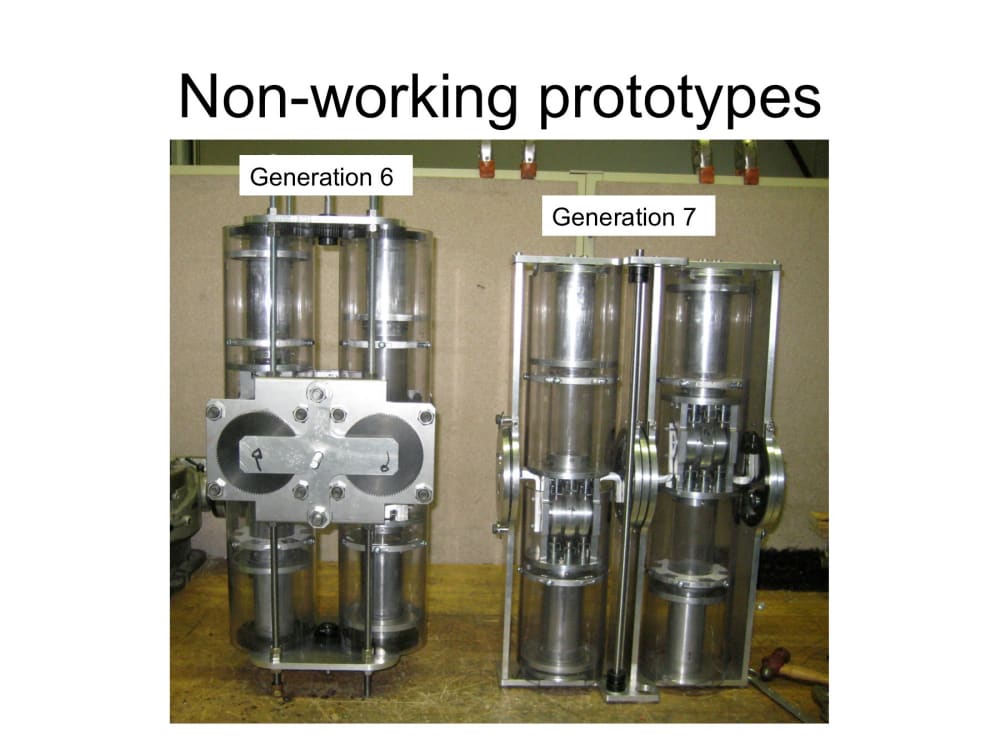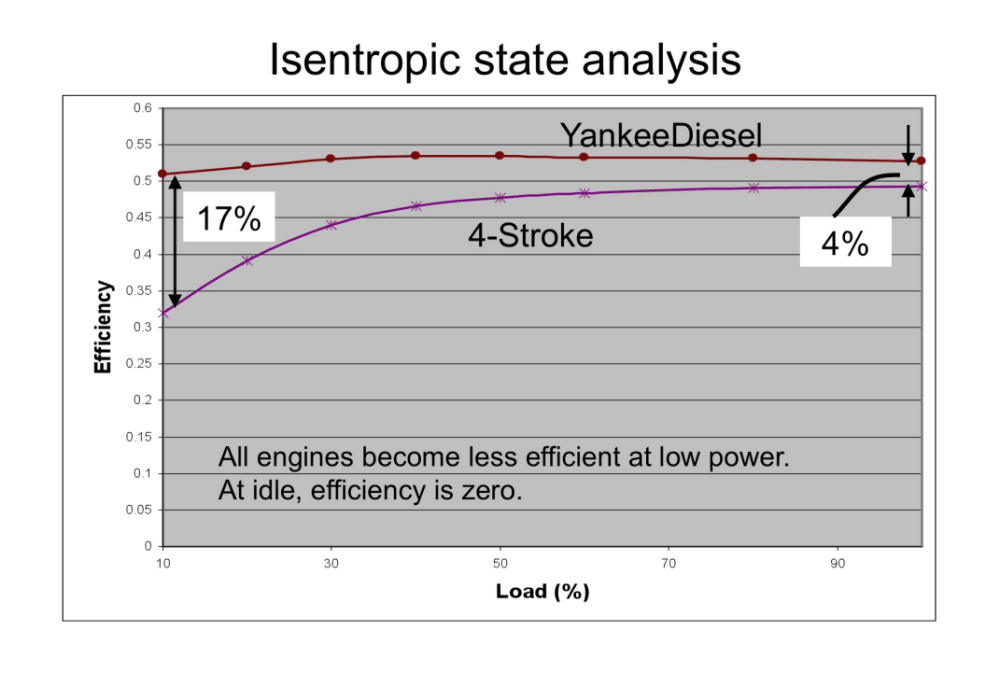The Problem:
Diesel engines were invented more than one hundred years ago. Continuous refinements have made diesels cleaner, quieter and more powerful. Nevertheless, the basic principles of operation and overall design remain unchanged. For this reason, diesel engines retain several shortcomings they have always had.
Diesels are noisy and hard to start in cold weather. The best engines have a peak efficiency of 40% and this is usually very close to full power. The delivered efficiency is less because engines do not normally run at full power. The YankeeDiesel (www.yankeediesel.com) was designed to overcome these problems.
The Solution:
?Diesel engines get their power from combustion gases pushing a piston. The moving piston rotates the crankshaft. But if you keep the piston fixed and make the combustion chamber rotate the crankshaft things become very different. With that as a starting point and the desire to make a more efficient engine, here is how the design evolved:
1) Reduce the waste heat in the exhaust. Let the combustion gases expand to a volume greater than the combustion chamber. ?
2) Let the air charge to the combustion chamber and the volume of the combustion chamber get smaller when less power is needed.
3) Make the inlet and exit valves big and keep them open as long as possible to reduce the pumping losses.
4) Keep the combustion chamber exit away from the fuel injector to reduce the possibility of unburnt fuel exiting. This video shows the basic parts of the YankeeDiesel. http://www.youtube.com/watch?v=xaOjhTOZOqU&feature=related
The YankeeDiesel achieves these goals with a radical three-chamber opposed cylinder design. Unlike conventional diesels, the YankeeDiesel combustion chamber reciprocates. The self-regulating supercharger enables a perfect fuel-to-air mixture for every stroke while the secondary expansion chamber harvests “wasted” heat to further extend the power stroke. Development work on the YankeeDiesel is well under way. To date, seven prototypes have been built. Each model has been designed to refine the concepts and improve the accuracy of the theoretical predictions. ?http://www.youtube.com/watch?v=IWWnAVJitTY&feature=related
Novel Design:
Greater efficiency over a wide power band is accomplished with two key mechanical innovations: 1) a throttle that allows the engine to run at reduced loads while maintaining a stoichiometric air/fuel mixture; ?2) a secondary expansion chamber that enables the combustion gases to continue doing work after leaving the combustion chamber.
Other Benefits are: Noise is reduced because the exhaust gases are released at relatively low pressure. Cold weather starting can be aided by adiabatic heating of the supercharged air. The engine is simpler because there is no separate camshaft, connecting rods or wrist pins. Friction is reduced because there is no side load on the cylinder walls. The flywheel is smaller because the two-stroke opposed cylinder design puts net torque to the crankshaft more than half of the time.
Like this entry?
-
About the Entrant
- Name:Paul Howard
- Type of entry:individual
- Hardware used for this entry:Dell and iMacSoftware used for this entry:Solidworks, Mathcad
- Patent status:pending








